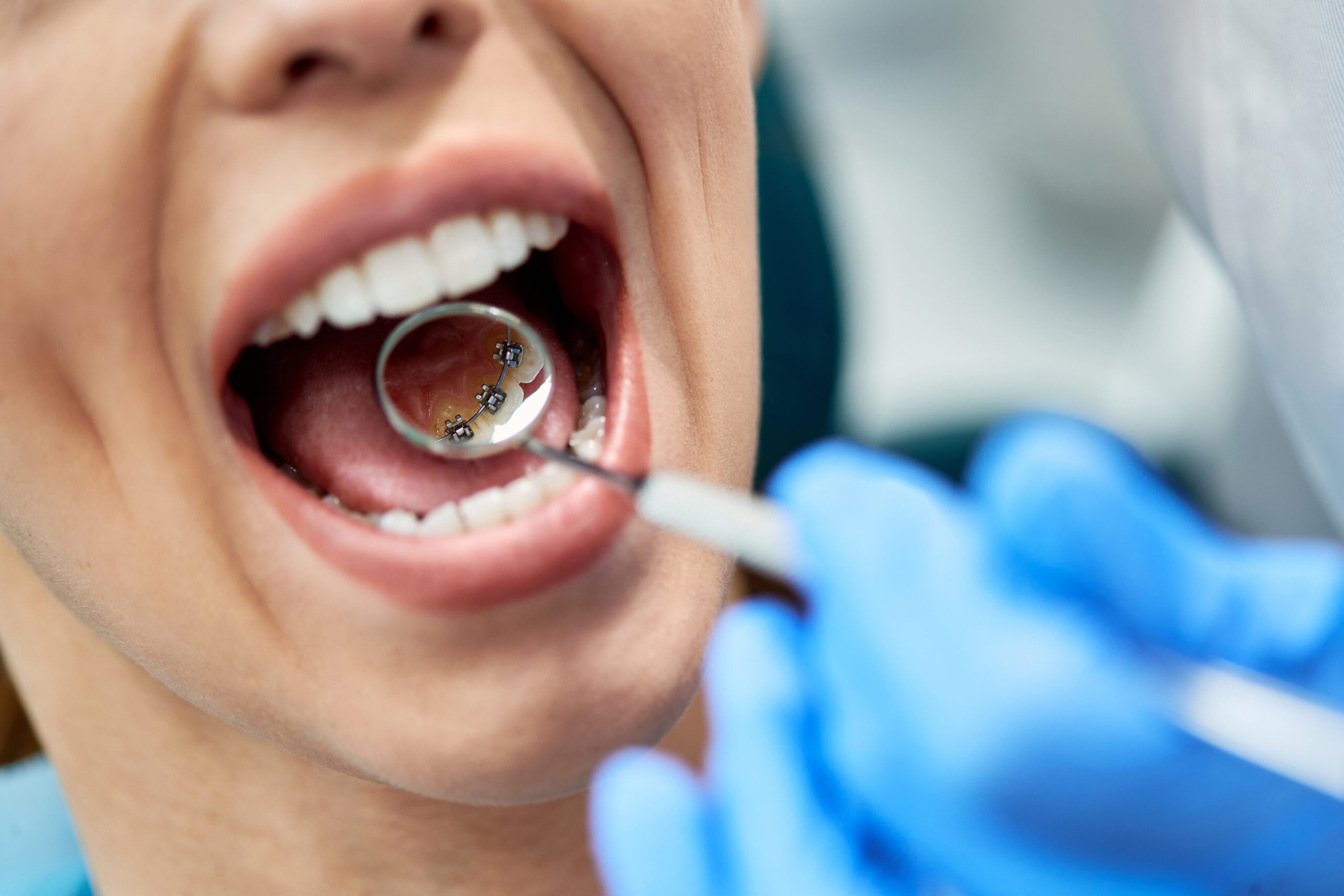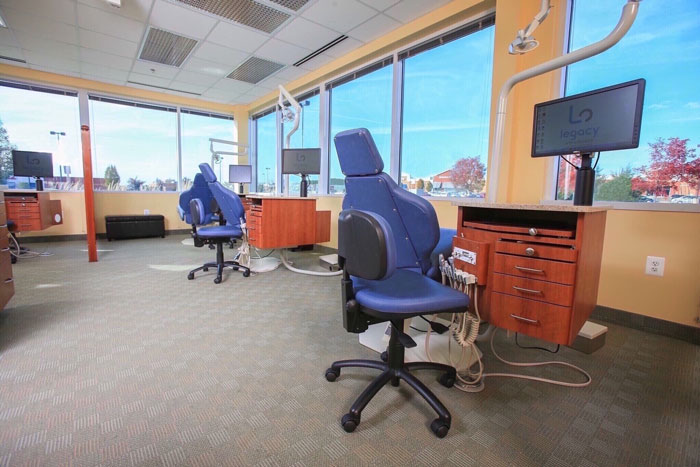Everything about Legacy Orthodontics
Everything about Legacy Orthodontics
Blog Article
Examine This Report about Legacy Orthodontics
Table of ContentsThe Ultimate Guide To Legacy OrthodonticsThe Best Guide To Legacy OrthodonticsSome Ideas on Legacy Orthodontics You Need To KnowAn Unbiased View of Legacy OrthodonticsNot known Factual Statements About Legacy Orthodontics
At Advanced Orthodontics, we supply individuals with a alternative therapy experience. On top of that, we provide flexible therapy routines, versatile settlement options and a fun, delightful experience. leesburg clear braces. Phone call ( 480) 357-4900 today for more details and timetable a visit.An orthodontist is a dental professional trained to identify, stop, and treat teeth and jaw abnormalities. They remedy existing problems and are educated to identify issues that may create in the future. Orthodontists work with people of every ages, from youngsters to adults. Individuals commonly associate a perfect smile with healthiness.
Malocclusion, or misaligned teeth, can result in oral problems, including dental cavity, gum illness, and difficult or unpleasant chewing. Yet not everyone is born with straight teeth. If you have a poor bite or huge rooms in between your teeth, you may want to consult a dental practitioner focusing on orthodontic care.
Not known Factual Statements About Legacy Orthodontics
( Photo Debt: DigitalVision/Getty Images) Orthodontists use taken care of and detachable dental devices, like dental braces, retainers, and bands, to alter the position of teeth in your mouth. Orthodontic treatment is for dental irregularities, consisting of: Misaligned teethBite troubles, like an overbite or an underbiteCrowded teeth or teeth that are too far apartJaw misalignmentThe goal of orthodontic therapy is to enhance your bite.
A healthy and balanced bite guarantees you can eat, chew, and talk correctly. While you may think about orthodontists as generally for children or teens who need braces, they can deal with oral troubles at any age. Orthodontists attend college, dental college, and orthodontic school. After graduation, they invest 2 or 3 years in an orthodontic residency program.
All orthodontists are dental practitioners, however not all dental professionals are orthodontists. Orthodontic residency programs use intensive, concentrated instruction for oral experts. They concentrate on 2 areas: Just how to correctly and securely relocate teeth How to effectively direct advancement in the teeth, jaw, and faceOnce an orthodontist has actually finished training, they have the choice to end up being board accredited.
Legacy Orthodontics Fundamentals Explained
Imbalance, or malocclusion, is one of the most typical factor individuals see an orthodontist. It is hereditary and is the result of size distinctions in between the top and lower jaw or between the jaw and teeth. Malocclusion brings about tooth overcrowding, a twisted jaw, or irregular bite patterns. Malocclusion is normally treated with: Your orthodontist attaches metal, ceramic, or plastic square bonds to your teeth.
If you have only small malocclusion, you might be able to use clear dental braces, called aligners, rather than standard dental braces (https://sitereport.netcraft.com/?url=https://www.legacyortho.com). Some individuals need a headwear to aid move teeth right into line with stress from outside the mouth. After braces or aligners, you'll require to wear a retainer. A retainer is a custom tool that keeps your teeth in area.
They're frequently made use of on kids. They can develop extra area in the mouth without having to pull teeth. If you have a serious underbite or overbite, you might need orthognathic surgery (likewise called orthodontic surgical treatment) to lengthen or shorten your jaw. Orthodontists make use of cables, surgical screws, or plates to support your jaw bone.
You might require to see an orthodontist if you have: Crowding or otherwise enough area for every one of your teethOverbite, when your top teeth come by your base teethUnderbite, when your base teeth are as well much forwardSpacing or problems with gapsCrossbite, which is when your upper teeth fit behind your base teeth when your mouth is closedOpen bite or an upright gap in between your front bottom and top teethMisplaced midline, when the facility helpful site of your bottom and upper teeth don't align Correcting a dental malocclusion can: Make attacking, eating, and speaking easierImprove the symmetry of our face and your overall appearanceEase discomfort from temporomandibular joint disordersSeparate your teeth and make them much easier to clean up, helping prevent dental cavity or tooth cavities It's frequently a dentist that first notices misaligned teeth during a routine exam.
Legacy Orthodontics Fundamentals Explained

Throughout your very first orthodontic consultation, you'll likely have: A dental examPhotos taken of your face and smileDental X-raysPanoramic (360 level) X-rays of your face and headImpressions to develop molds of your teethThese examinations will certainly help your orthodontist recognize just how to wage your therapy. leesburg invisalign. An orthodontist is a dental professional who's had training to treat your teeth and jaw
Orthodontists might carry out surgical procedure, exams,X-rays,and more to aid you obtain an extra comfy, much healthier smile. An orthodontist is concentrated on your bite, so something like a cracked tooth would be dealt with by a dental professional. Orthodontists are dental experts but not all dentists are orthodontists. Orthodontists are concentrated on your bite, or the way your teeth meshed, and the straightness of your teeth.
Ever before asked yourself how celebrities always appear to have perfectly straightened teeth? The solution commonly depends on the proficient hands of an orthodontist. What precisely does an orthodontist do? Orthodontists are dental specialists who concentrate on remedying abnormalities in the teeth and jaws. Their experience surpasses just developing an attractive smile; it includes boosting your general oral health and wellness and feature.
How Legacy Orthodontics can Save You Time, Stress, and Money.

While dental braces are the most frequently recognized orthodontic therapy, orthodontists have a diverse toolkit at their disposal. The specific approach selected depends upon the seriousness of the instance, the client's age, and individual preferences. These tried-and-true dental braces utilize a system of brackets adhered to the teeth and linked by cables.
Clear aligners, like Invisalign, are a prominent alternative for patients seeking an extra very discreet therapy option. These detachable trays are tailor-made to considerably shift the teeth's placement. Headgear may be utilized together with braces or aligners to apply additional targeted forces, especially for correcting jaw inconsistencies. In cases of narrow jaws, palatal expanders can be utilized to develop space for proper tooth alignment.
Report this page